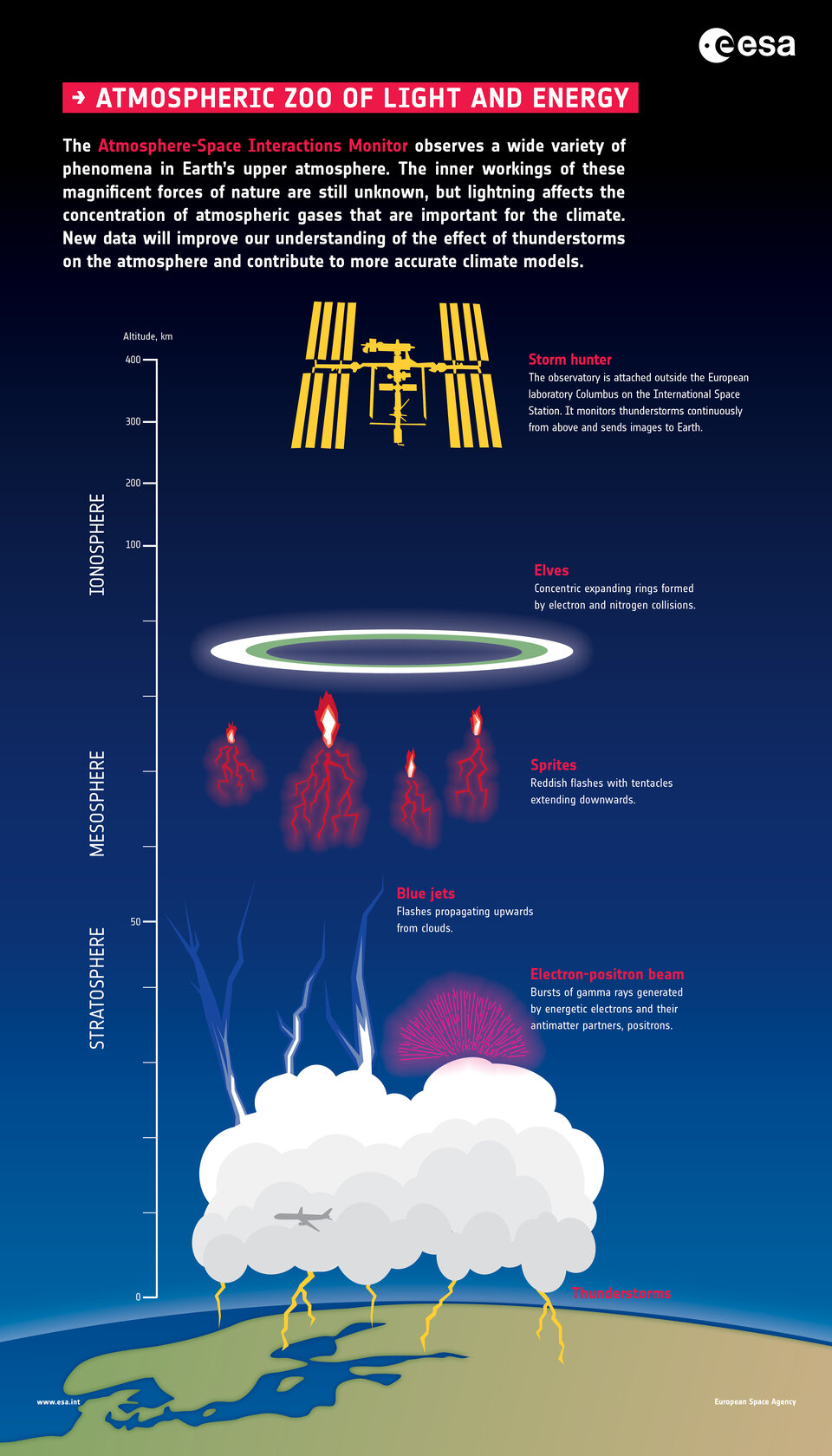Atmosphere–Space Interactions Monitor

The Atmosphere–Space Interactions Monitor, or ASIM, is installed outside the European space laboratory Columbus to monitor electric events at high altitudes.
For years, their existence has been debated: elusive electrical discharges in the upper atmosphere that sport names such as red sprites, blue jets and elves. Reported by pilots, these ‘transient luminous events’ are difficult to study as they occur above thunderstorms.
Satellites have probed them and observations have even been made from mountain tops but their viewing angle is not ideal for gathering data on large scales. In contrast, the International Space Station’s low orbit covers a large part of Earth along the equator and is ideally placed to capture the sprites and jets.
In 2015 ESA astronaut Andreas Mogensen managed to record many kilometre-wide blue flashes around 18 km altitude, including a pulsating blue jet reaching 40 km. A video recorded by Andreas as he flew over the Bay of Bengal at 28 800 km/h on the Station shows the electrical phenomena clearly – a first of its kind.
Permanent observation

ESA’s Astrid Orr says, “The system resembles a pinhole camera of old, but repeated hundreds of times. A computer then reassembles the data into a useful image.”
Researchers want to investigate the relationship between terrestrial gamma-ray bursts, lightning and high-altitude electric discharges across all seasons by tracking and collecting data continuously for at least two years.
Aside from being a little-understood phenomenon and part of our world, these powerful electrical charges can reach high above the stratosphere and have implications for how our atmosphere protects us from radiation from space.

- Launch: 2 April 2018
- Launch vehicle: Dragon
- Weight: 314 kg
- Power consumption under normal conditions: 200 W (including survival heaters: 430 W)
- Data downlink: 200 kbit/s continuous
- Main contractor: Terma, Denmark
- Control centre: B.Usoc, Belgium
















